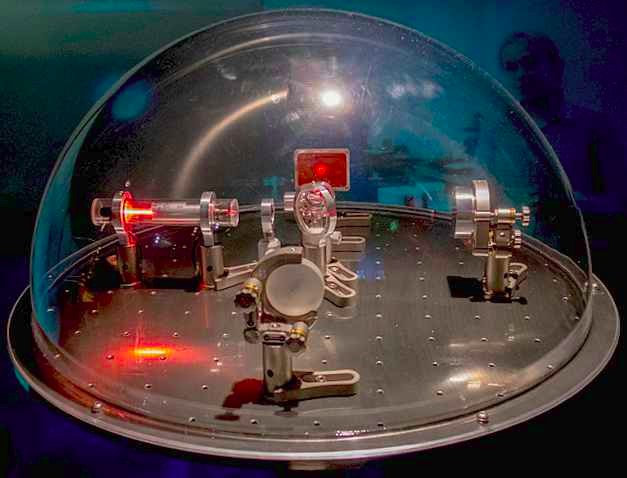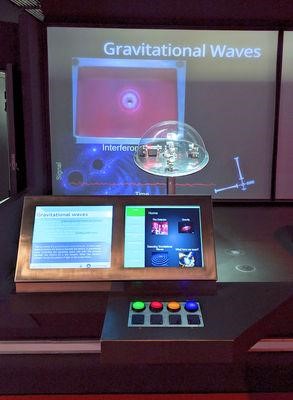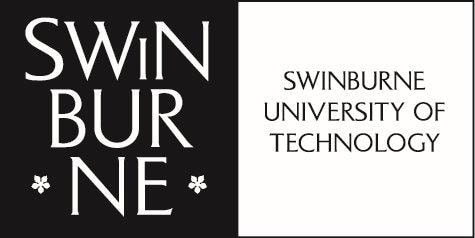|
Gravitational wave scientists have designed and built an interactive science exhibit modeled of a real-life gravitational-wave detector to explain gravitational-wave science. It was developed by an international team, which includes researchers now at the OzGrav ARC Centre of Excellence for Gravitational Wave Discovery (OzGrav). The recently published research paper is now featured in the American Journal of Physics and the exhibit, which is called a Michelson interferometer, is on long-term display at the Thinktank Birmingham Science Museum in the UK. The project has a lasting international impact with online instructions and parts lists available for others to construct their own versions of the exhibit. Observations of gravitational waves -- ripples in the fabric of space and time -- have sparked increased public interest in this area of research. The effect of gravitational waves is a stretching and squashing of distances between objects. Real-life observatories are large complex devices based on the Michelson interferometer that use laser light to search for passing gravitational waves.
In a Michelson interferometer, laser light is split into two perpendicular beams by a beam-splitter; the beams of laser light travelling down the detector arms reflect off mirrors back to the beam-splitter where they recombine and produce an interference pattern. If the relative length of the arms changes, the interference pattern will change. The exhibit model cannot detect gravitational waves, but it’s extremely sensitive to vibrations in the room! The Michelson interferometer exhibit has an attractive high-shine design, using lab-grade optics and custom-made components, drawing people in to take a closer look. A list of all the parts used in the intricate design is available on the official website -- the creators are continuing to investigate low-cost designs using laser pointers and building blocks. At science fairs, experts are normally present to explain the items on display; however, this is not the case in a museum. ‘Exhibits need to be easily accessible with self-guided learning,’ explains OzGrav postdoc Dr Hannah Middleton, one of the project leads from the University of Melbourne. ‘We’ve developed custom interactive software for the exhibit through which a user can access explanatory videos, animations, images, text, and a quiz. Users can also directly interact with the interferometer by pressing buttons to input a simulated gravitational wave, and produce a visible change in the interference pattern.’
0 Comments
Leave a Reply. |
|
- Home
- About
-
Our People
- Chief Investigators
- Partner Investigators
- Associate Investigators
- Postdocs and Students >
- Professional & Outreach staff
- Governance Advisory Committee
- Scientific Advisory Committee
- Executive Committee
- Equity & Diversity Committee
- Early Career Researcher Committee
- Professional Development Committee
- Research Translation Committee
- OzGrav Alumni
- Research Themes
- Education and Outreach
- Events
- News/Media
- Contact Us
- Home
- About
-
Our People
- Chief Investigators
- Partner Investigators
- Associate Investigators
- Postdocs and Students >
- Professional & Outreach staff
- Governance Advisory Committee
- Scientific Advisory Committee
- Executive Committee
- Equity & Diversity Committee
- Early Career Researcher Committee
- Professional Development Committee
- Research Translation Committee
- OzGrav Alumni
- Research Themes
- Education and Outreach
- Events
- News/Media
- Contact Us



 RSS Feed
RSS Feed








